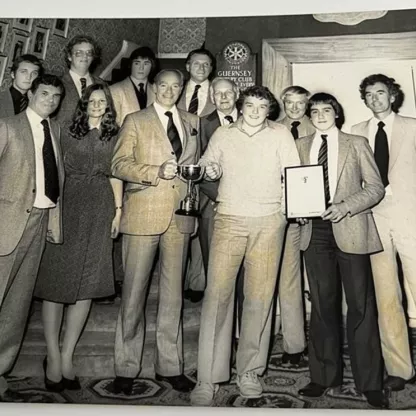We’ve seen in our first two blogs in our series on brands how millennials are driving big changes in the consumer landscape, and some of the challenges posed to global branded goods – challenges faced by smaller and more personalised businesses like advisers too. In this final instalment, we explore how established businesses can thrive in this ‘brand new world’.

How to survive in the ‘brand’ new world
We are confident that many of today’s consumer goods companies can not only survive, but even thrive in a rapidly changing consumer landscape, if they recognise the challenge and adopt the right strategies. From an investment perspective, vigilance and ongoing, active management of these major brands in client portfolios is needed to separate the wheat from the chaff.
No more ‘lazy loyalty’
In the past, the behaviour of younger customers may have been dismissed as ‘faddish’, but no brands can continue relying on ‘lazy loyalty’. As these ‘fads’ persist and are indeed increasingly adopted by older generations — particularly in areas like the desire for natural ingredients, sustainability and ethical standards — they will become impossible to ignore.
The way that consumers react to brands has changed fundamentally. Marketing is increasingly incorporating neuroscience to understand how consumers engage with brands emotionally. Brands are after loyalty, and they need emotional engagement to find it. Survey data suggests that when millennials find a brand which resonates with them and works hard to engage and retain them, they will be loyal. This requires the long-term cultivation of a personal connection.
Clarity and authenticity
A company must clearly define its values and what it is setting out to do in order to establish an enduring connection with consumers. Millennials are articulate about their own values and become loyal to companies which match them. They make an emotional investment beyond the basic product.
Pretending won’t do. Brands must live and operate according to their promoted values. In an era of social media and heightened transparency, millennials will punish those that fall foul of their own self promotion; Twitter has seen the downfall of many. Getting the right brand message across, and living by it, is essential.
Engage socially
When younger customers do find a brand they want to fully engage with, they want to feel part of something bigger. Companies can create these communities through websites and apps where consumers learn more about a brand’s core values, purpose and qualities - a new dimension called ‘social commerce’, that can further increase loyalty.
Brands also need to tap into the ‘review culture’ of the younger generations, who place a huge weight on social proof and recommendations. In an age of mistrust of corporates and scepticism about advertisements, consumers feel that endorsement by peers has greater authenticity and value.
Leverage strengths
Large consumer goods companies perhaps became too complacent and bureaucratic to be agile, proactive and innovative, and found themselves playing catch-up with smaller more nimble start-ups. However, established consumer goods companies have some significant incumbency and scale advantages that we should not ignore.
Their scale means they can recruit the brightest talent, have well-established distribution networks and significant product development knowledge. They also enjoy good name recognition, albeit that needs to be supplemented by further moves into social commerce and engaging with consumers across multiple platforms. These nimble start-ups will face challenges of their own, like scaling up production and distribution. Being small doesn’t guarantee being perfectly formed.
Innovation is what matters. The large research and development teams often found in long-established consumer goods companies should work hard to improve their existing products and create new ones.
If you can’t beat em’, join em’
Sadly, employing these thousands of people doesn’t guarantee finding every promising new product opportunity. Start-ups will always exist to fill a gap missed by established brands. However, the insight gained through the research teams can offer the branded gentry additional insight in three ways. The first is to quickly move themselves into a new growth area identified by a rival. The second is to use their - often significant - cash reserves to buy the right niche players. Thirdly, the established brands can partner with start-ups, offering them expertise and resources in return for a stake in their business. The latter option is being pursued by a lot of consumer goods companies, as they recognise that they do not have a monopoly on good ideas.
A new brand of vigilance
The behaviour of the younger generations really matters to any established business. Millennials value cost-consciousness and experience over possessions, and this poses a threat to many brands.
Brands that ignore these threats will suffer, but there is great opportunity too. Active management of client portfolios is needed to identify brands that are forward-thinking and innovative, and weed out those that are not. At Rathbones, we’ll be keeping a close eye on this ‘brand new world’ to do just that.








